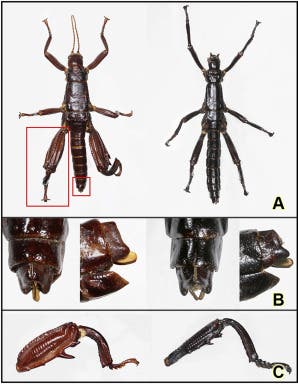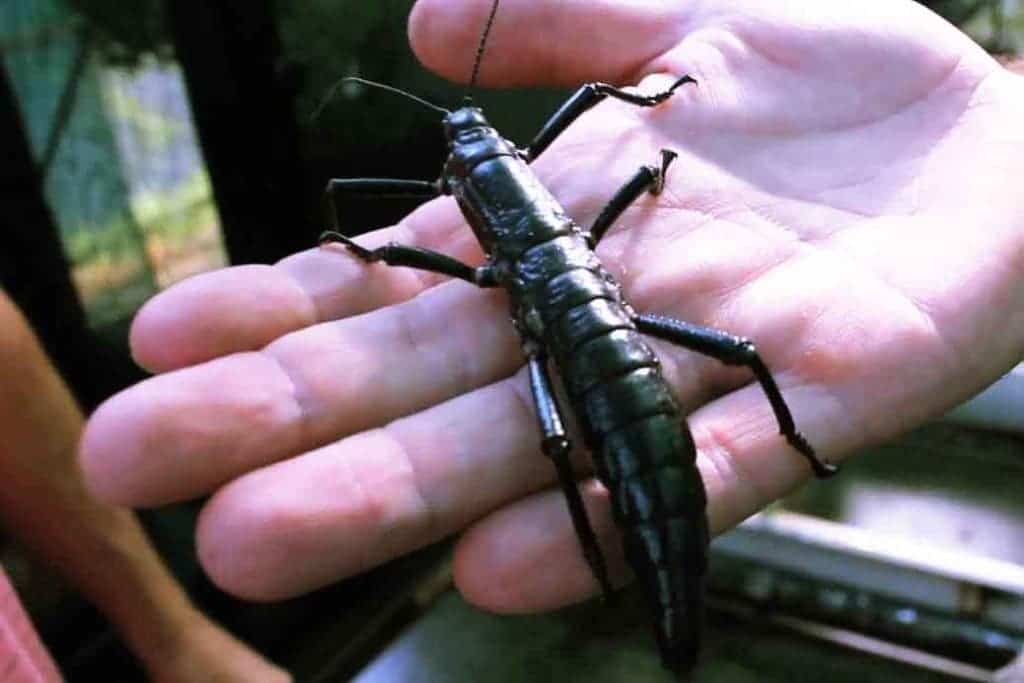A 6-inch-long stick bug with an exoskeleton that looks like a lobster was metaphorically brought back from the dead by scientists. The tree lobster (dryococelus australis) was long thought extinct but thanks to a group of exploring rock climbers and DNA sequencing techniques, scientists have confirmed that the bug is still very much alive.
News of its extinction have been gravely exaggerated
In 1918, rats from a capsized boat reached the shores of Lord Howe Island in the Tasman Sea, between Australia and New Zealand. It didn’t take too long before hungry, fast-breeding rodents wreaked havoc on the local ecosystem. Within two years, the rats drove several native species extinct. Among them was the tree lobster, which was officially declared extinct in 1986.
There were, however, some hints that the tree lobster might still be around. In the 1960s, rock climbers in Ball’s Pyramid — a great jagged spire rising from the Tasman Sea on a nearby island, 12 miles from Lord Howe — found dead insects that looked a lot like the stick bugs. Then, four decades later, researchers scaled the third-of-a-mile-high cliff and actually found live insects chowing down on a tea tree at night.

This isn’t a CGI rendering for some fantasy movie. Ball’s Pyramid (named after a European named Ball who first saw it in 1788) was formed 7 million years ago due to a volcanic eruption.
Both the empty skeletons and live insects, however, looked mysteriously different from the preserved Lord Howe tree lobsters scientists had studied from museums. The legs were skinnier with smaller spines, and the cerci (small stubs sticking out from the abdomen) were offset. The insects were also darker. Naturally, scientists just assumed they were dealing with a very similar but different species, and not the tree lobster itself.

Morphological Differences between Males from Lord Howe Island and Ball’s Pyramid. Credit: Current Biology.
Now, Alexander Mikheyev, an ecologist at the Okinawa Institute of Science and Technology, Japan, along with colleagues, showed that the genetic differences between Lorde Howe and Ball’s Pyramid insects were within the range of the same species, as reported in Current Biology.
The two islands, though quite close from one another, were never connected by land and tree lobsters can’t swim. But since the new genetic analysis unambiguously shows we’re dealing with the same species, it could be that the environment, diet or inbreeding could explain the different appearance. Birds or debris likely ferried them between the two islands.
Right now, there are thousands of living tree lobsters and their eggs, descended from Ball’s Pyramid populations currently being kept in zoos and museums around the world. Scientists now plan to reintroduce the new population back to the wild on Lord Howe Island as soon as black rats are eradicated. In the breathtaking video below, you can see the how the first tree lobster bred in captivity hatched in the zoo.
The rapid loss of species we are seeing today is estimated by experts to be between 1,000 and 10,000 times higher than the natural extinction rate. We don’t know for sure how many species die off each year but estimates put a ballpark between 200 and 2,000 extinctions. It’s thus extremely refreshing to report about a species that’s still alive for a change rather than depressingly gone forever.
“In this case, it seems like we’re lucky and we have not lost this species forever, although by all rights we should have,” said Mikheyev in a press release. “We get another chance—but very often we do not.”
You can learn more about the tree lobster and its amazing story of resilience in the award-winning, 20-minute-long documentary ‘Sticky’.










